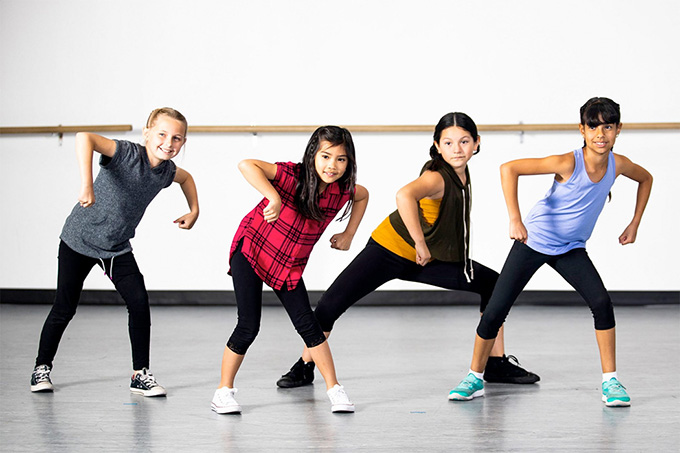
“Tum pa, tum pa, tum pa pa”… This is an example of what you hear when you enter one of the body expression and dance classes in the Degree in Physical Activity and Sports Sciences. In the style of Stomp , that famous show in which a group of dancers used brooms or garbage cans, these sounds are sung and emerge from the body when you stamp your foot hard on the ground, when you slap your hands on your chest or when you express the sound with clapping your hands. The body returns to childhood, remembering hand games in the playground, laughing and creating with friends.
In modern Western culture, choreography has traditionally been associated with dance and dance has been associated primarily with women, creating barriers to male participation. This perception not only limits students’ opportunities to enjoy and benefit from dance, but also reinforces unhelpful gender stereotypes.
In a recent study , we explored how body percussion can introduce dance, challenging and redefining gender perceptions in Physical Education classes specific to body expression content.
This study has proposed the process of transforming rhythmic games into a joint choreography: the group of students received information about the possibilities of the body as a generator of different sounds, how to use the body in space, time and with different energies, and from this knowledge, they created sounds through body percussion. Starting from an initial rhythmic pattern, they explored the possibilities of the body to move in space, relating, at the same time, through physical contact with their classmates. The objective: to express a message by transmitting different emotions.
What is body percussion?
Body percussion can be interpreted as the action of hitting one’s body to generate sounds. If these sounds are arranged in order, they give rise to a rhythmic pattern that can be represented in a score. This musical language can be part of music classes. In fact, in Catalonia, the educational law contemplates it and it is used in Physical Education classes .
Body percussion is presented as an innovative and effective solution to neutralize the gender connotations associated with dance. It combines elements of dance, theatre and music, creating a multidisciplinary art form that can be integrated transversally into education.
In our case, we introduced this discipline to a group of 62 university students, who showed significant changes in their emotional states after participating. We were able to verify that all students experienced a decrease in feelings such as tension, depression and anger, and an increase in vigor after participating in the body percussion sessions.
Dancing in Physical Education
In order for the introduction of this percussion and dance technique to be effective in the context of the Physical Education class, we suggest taking into account the following issues:
- Education and awareness : It is especially important that physical education teachers are trained and sensitized about the importance of overcoming gender stereotypes. In this sense, ongoing training can help educators implement inclusive practices in their classes.
- Diversification of content : integrating a variety of dance styles and body percussion practices that are not associated with a specific genre, or with which children can identify more, such as urban dances like breaking dance or traditional body percussion practices .
- Encourage active participation : Create a classroom environment that encourages all students, without distinction, to actively participate in dance and body percussion activities. This can be facilitated by the use of group dynamics that promote cooperation and inclusion.
- Raising awareness of role models : presenting examples of male figures such as Keith Terry , creator of the International Body Music Festival (IBMF) , and Santi Serratosa and Jep Meléndez ; and female figures such as Anna Llombard and Leela Petronio , among others, who have been successful in the world of dance. Their performances can inspire students and show that these activities are valid and valuable for everyone.
Explore and enjoy dancing without restrictions
By fostering an inclusive environment and challenging traditional perceptions, we can make it easier for all students to fully participate in these enriching activities. This approach not only benefits students’ physical and emotional development, but also contributes to a more equitable society free from discrimination.
Education is a powerful tool for social change, and by integrating practices like body percussion into physical education, we are taking a significant step towards a future where all students can explore and enjoy dance without restrictions.
Author Bios: Jose Vicente Beltran Garrido is Associate Professor in the area of knowledge of Physical and Sports Education at CEU Cardenal Herrera University and Silvia Garcias de Ves is on the Teaching and Research Staff in Physical Activity Didactics for Education, Culture and Wellbeing at the Department of Health of the Generalitat de Catalunya
